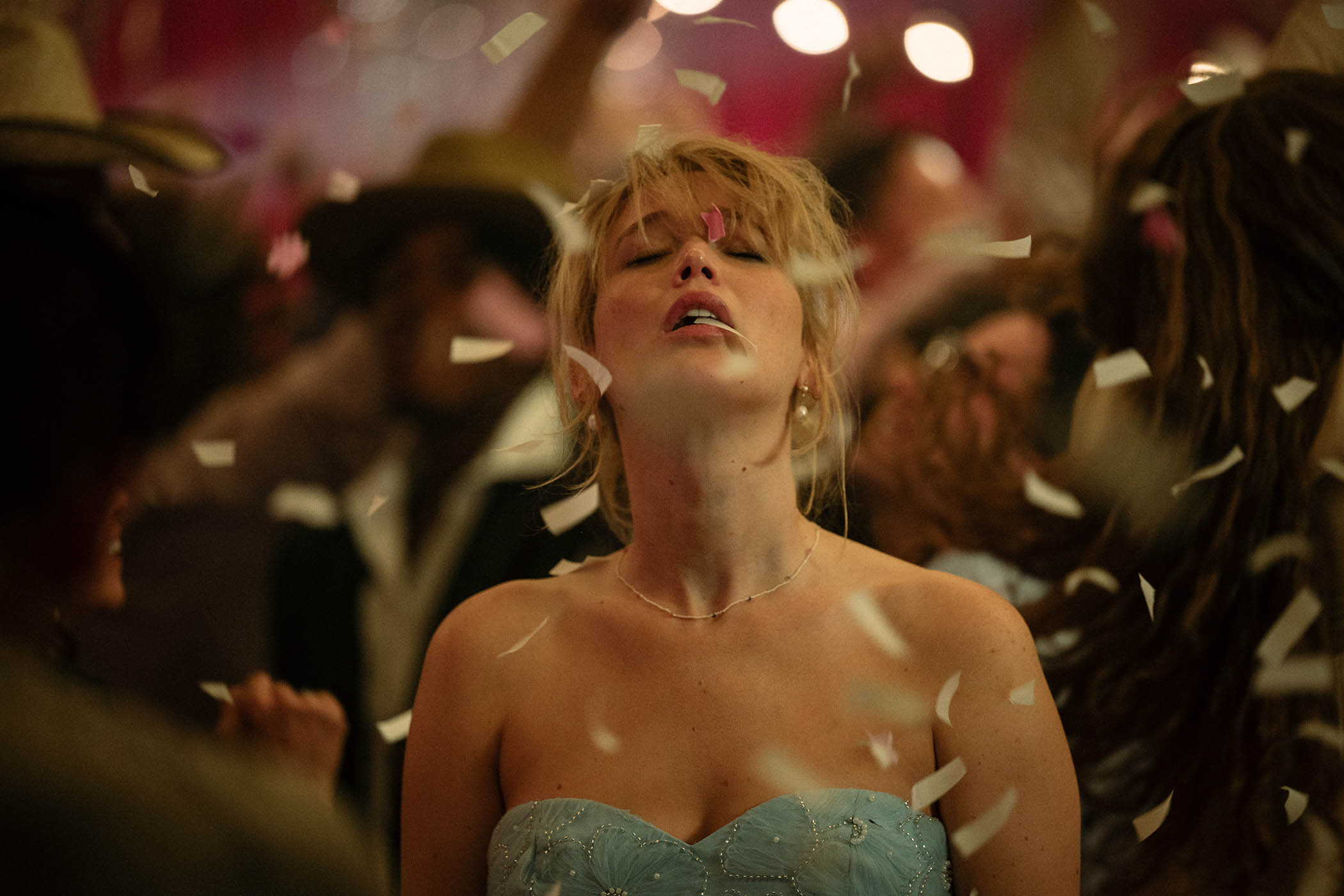“Everyone goes a little loopy in the first year after a baby.” This line is meant to reassure – a throwaway platitude delivered in the same sing-song, calming tone that you might use to coax a griping infant down from the brink of a tantrum. But for new mother Grace, played by Jennifer Lawrence, the baby-talk and brain-numbing banalities are part of the problem, along with the perpetually churning low-level panic, the paralysing boredom, the loss of identity, creative inertia and the fractured marriage.
Several recent films – Tully, starring Charlize Theron, and the Amy Adams vehicle Nightbitch, for example – have attempted to examine the feral, demented side of new motherhood. But thanks to a fearless, physically committed performance from Lawrence, and to the bold risks embraced by director Lynne Ramsay, Die My Love is, by no small margin, the most successful to date. It might be postpartum psychosis that has Grace in its grip. It might be depression. Or it might be that reality for Grace has become distorted by a haze of hormones and a cracked lens of anxiety. The film stops short of offering a solid diagnosis, instead immersing us in Grace’s unnerving fever dream.
The story is shattered into fragments and reassembled in a way that disorients and unbalances. We piece together a backstory: Grace and her partner Jackson (Robert Pattinson) have relocated from New York to an isolated rural farmhouse near to his widowed mother Pam (Sissy Spacek) and miles from anything else of consequence. It’s a new start, a place to create. Jackson hopes to record an album; Grace can finally write her great American novel. They relish the isolation, hungrily rediscovering each other’s bodies and blasting music without fear of bothering the neighbours.
She brings an unsettling note of savagery to every action, be it housework, childcare or sex
But there’s a telling moment in a scene near the start of the film: a locked shot captures the couple as they arrive, for the first time, at what will be their new home. Despite a liberating sense of light and space, Ramsay’s choice of a tight, squarer Academy aspect ratio makes it feel as though the walls are already closing in. We view the couple in the distance through two aligned door frames – it looks ominously like a cage within a cage within a cage.
The project dates back to 2020, when Martin Scorsese’s book group read the novel Die, My Love by the Argentinian author Ariana Harwicz. Scorsese, who is an executive producer on the film, sent the book to Lawrence’s production company, urging her to consider Grace as a potential role for herself. Scorsese, it’s reported, was convinced that no other actor could do justice to the complex character. He may well be correct: Lawrence is thrillingly uninhibited and physically impulsive. Her Grace brings an unsettling note of savagery to every action, be it housework, childcare or the increasingly rare instances of sex with the wide-eyed and apprehensive Jackson. Pacing restlessly around the farmhouse, she is like a snared animal that would chew off its own limb to escape.
Related articles:
Ramsay is an astute match of director to material. Working once again with Seamus McGarvey, the cinematographer on her 2011 film We Need to Talk About Kevin (another shattering exploration of dysfunctional motherhood), Ramsay blurs the division between reality and fantasy. Sleepless nights – or waking dreams perhaps – are shot in a blue-grey half-light that makes the trees and the corn fields seem ghostly and impermanent. And her choice of music is, as always, bracingly unexpected, including a particularly effective use of the effervescent 1980s cheerleader pop hit Mickey by Toni Basil. At first, it seems joyful and energetic, as Grace bops around the empty rooms of her house. But with repetition and jagged edits, the peppy enthusiasm of the song starts to take on a manic and deranged flavour: Grace’s flailing dance moves become spasmodic and wild, as if pushing her body to the brink just to feel something.
Perhaps the least successful aspect of the film is an ambiguous, presumably fantastical ending that invites multiple interpretations, none of which sit entirely comfortably with the rest of the picture. Is Grace walking away from everything, including her child? That’s hard to reconcile with the connection she feels with the baby. Perhaps it symbolises rebirth and rebuilding from the ashes of a breakdown? Or maybe Grace just wants to burn the whole world to the ground. She certainly wouldn’t be the first new mother to feel that way.
Photograph by Kimberly French



